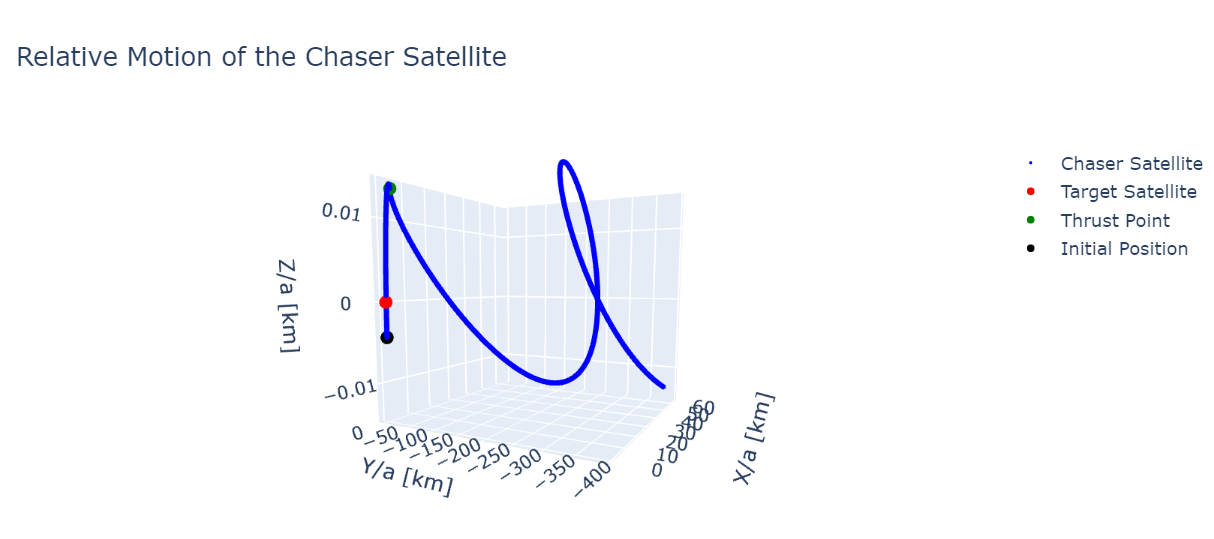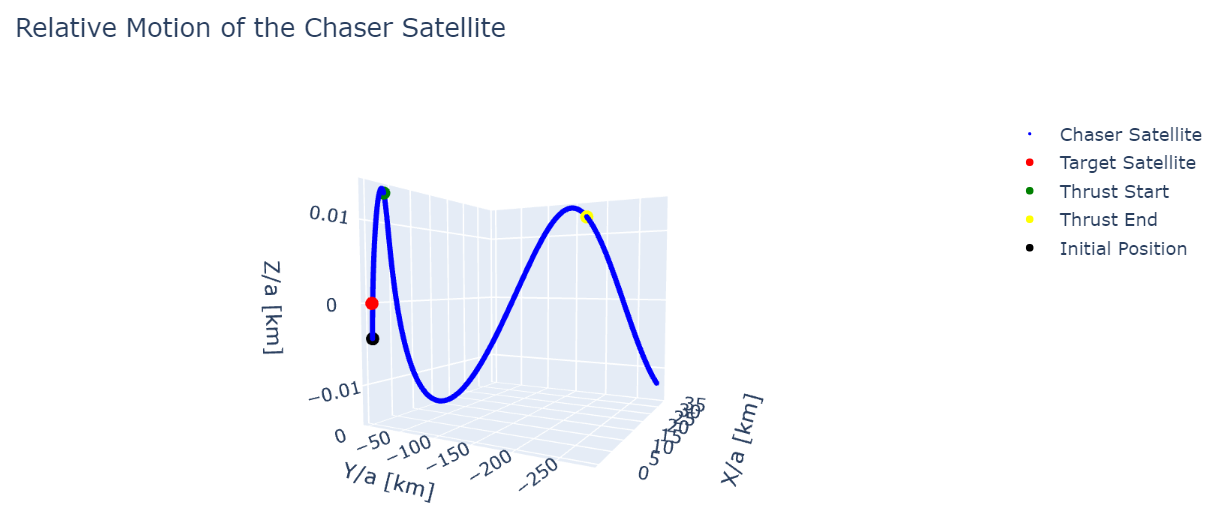Update on progress; impulse vs non-impulse simulation
Published:
Building upon my prior work using the Clohessy-Wiltshire equations to create a trajectory simulation for a target and chaser satellite (as discussed in blog post 2), the next step was to utilize and develop this code to compare the effects of impulsive and non-impulsive manoeuvres modelling. This somewhat spiralled into me writing a short paper to summarise my work (still in progress but attached to this post nonetheless).
When simulating satellite manoeuvres, the tracking of the satellite’s resultant trajectory can be computed in a multitude of ways; the most prominent manners of modelling are impulsive and non-impulse models. An impulsive model assumes that a satellite undergoes an instantaneous velocity change where the position vector remains stationary at the burn point. This is obviously not realistic as it would require an infinite force across an infinitely small period1 but it can be close enough when approximating a high thrust, short burn. A non-impulsive manoeuvre (or extended burn) is a burn that occurs over a time period and as such is much more realistic. They can typically be used to represent low-thrust, extended burns.
Running these simulations allowed me to model two manoeuvres with the same magnitude of force applied - one instantaneously and one across an extended period - highlighting the disparities in trajectory between the two.
Click here to view images of manoeuvres


To read more about the methodologies and results of these simulations, please refer to the following document: Read the full paper
See Newton’s laws for an explanation of this, he was a bit better at explaining stuff than I am. ↩
